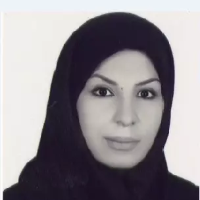Palm branch in the Parthian coins of Iran, case study: coins of Phraates II
Author(s):
Article Type:
Research/Original Article (بدون رتبه معتبر)
Abstract:
Coins are engraved metals like books full of historical, cultural, religious, and mythological information. They are also like written documents that can be analyzed through their motifs through symbolism, and they are the most important guide for researchers in recognizing and familiarizing themselves with religious beliefs in different historical periods. Therefore, studying the images and symbols on them opens a window to ancient periods for researchers. Due to its long reign, the Parthian is one of ancient Iran's most important critical periods. They minted many coins with various motifs. One of the symbols used is the pattern of a palm branch, which from the time of Phraates II can be seen as the reverse of the drama and tetradrachm coins of the Seleucid Mint. This study has investigated the symbol of palm branch in coins of Phraates II in the Seleucid Mint to realize political goals. These coins are kept in Reza Abbasi Museum in Tehran (Iran) and were purchased through private collectors. In this study, 250 Parthian coins were examined, among which 60 coins had palm motifs. The palm branch is considered a mythological plant common between Mesopotamia, and Greek. Parthian king, the branch palms were used as symbols for victory, under the cultural influence of the Seleucid and Mesopotamia.
Keywords:
Coins , palm , Parthian , mesopotamia , Phraates II
Language:
English
Published:
Journal of Archeology and Archaeometry, Volume:2 Issue: 2, Summer 2023
Pages:
19 to 27
https://magiran.com/p2619012
مقالات دیگری از این نویسنده (گان)
-
The Study of Jahangir Dome and Guriye Stucco Decorations: With an Emphasis on Applied Geometry
*, Leila Khosravi
Persica Antiqua, Jan 2023 -
Typology, Morphology, and elemental analysis of Early Islamic period glass bracelets from Jahangir dome and Goriye tape in Ilam province.
*, Davoud Agha Ali Gol, Leila Khosravi
Journal of Research on Archaeometry,



